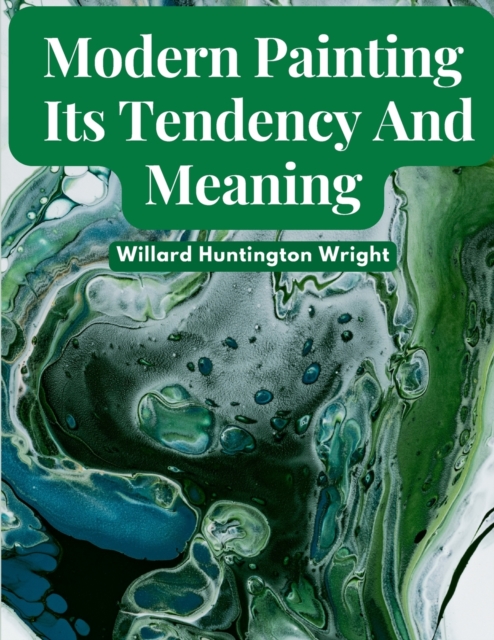
Modern Painting : Its Tendency And Meaning Paperback / softback
by Willard Huntington Wright
Paperback / softback
Description
That beneath all great art there has been a definite animating purpose, a single and profound desire to reach a specific goal, has been but vaguely sensed by the general public and by the great majority of critics. And there are, I believe, but very few persons not directly and seriously concerned with the production of pictures, who realise that this animating purpose has for its aim the solution of the profoundest problems of the creative will, that it is rooted deeply in the aesthetic consciousness, and that its evolution marks one of the most complex phases of human psychology.
The habit of approaching a work of art from the naif standpoint of one's personal temperament or taste and of judging it haphazardly by its individual appeal, irrespective of its inherent aesthetic merit, is so strongly implanted in the average spectator, that any attempt to define the principles of form and organisation underlying the eternal values of art is looked upon as an act of gratuitous pedantry. But such principles exist, and if we are to judge works of art accurately and consistently these principles must be mastered. Otherwise we are without a standard, and all our opinions are but the outgrowth of the chaos of our moods. Any attempt to democratise art results only in the lowering of the artistic standard. Art cannot be taught; and a true appreciation of it cannot grow up without a complete understanding of the aesthetic laws governing it.
Those qualities in painting by which it is ordinarily judged are for the most part irrelevancies from the standpoint of pure aesthetics. They have as little to do with a picture's infixed greatness as the punctuation in Faust or the words of the Hymn to Joy in the Ninth Symphony. Small wonder that modern art has become a copious fountain-head of abuse and laughter; for modern art tends toward the elimination of all those accretions so beloved by the general- literature, drama, sentiment, symbolism, anecdote, prettiness and photographic realism. This book inquires first into the function and psychology of all great art, and endeavours to define those elements which make for genuine worth in painting. Next it attempts to explain both the basic and superficial differences between "ancient" and "modern" art and to point out, as minutely as space will permit, the superiority of the new methods over the old. By this exposition an effort is made to indicate the raison d'etre of the modern procedure. After that, modern painters are taken up in the order of their importance to the evolution of painting during the last hundred years.
I have tried to answer the following questions: What men and movements mark the milestones in the development of the new idea? What have been the motivating forces of each of these schools? To what extent are their innovations significant: what ones touch organically on the vital problems of aesthetics; and what was their influence on the men who came later? Out of what did the individual men spring; what forces and circumstances came together to make their existence possible? What were their aims, and what were their actual achievements? What relation did they bear to one another, and in what way did they advance on one another? Where has modern art led, and what inspirational possibilities lie before it?
Before setting out to solve these problems, all of which have their roots in the very organisms of the science of aesthetics, I have posed a definite rationale of valuation. My principles are based on the quickening ideals of all great art, and, if properly understood, I believe, they will answer every question which arises in the intelligent spectator when he stands before a piece of visual art, be it a Byzantine mosaic, a complicated organisation by Rubens, a linear arrangement by Picasso or an utterly worthless anecdote in paint by an English academician.
Information
-
Out of stock
- Format:Paperback / softback
- Pages:206 pages
- Publisher:Intell Book Publishers
- Publication Date:11/05/2023
- Category:
- ISBN:9781805475200
Other Formats
- Hardback from £20.95
- Paperback / softback from £13.31
Information
-
Out of stock
- Format:Paperback / softback
- Pages:206 pages
- Publisher:Intell Book Publishers
- Publication Date:11/05/2023
- Category:
- ISBN:9781805475200






